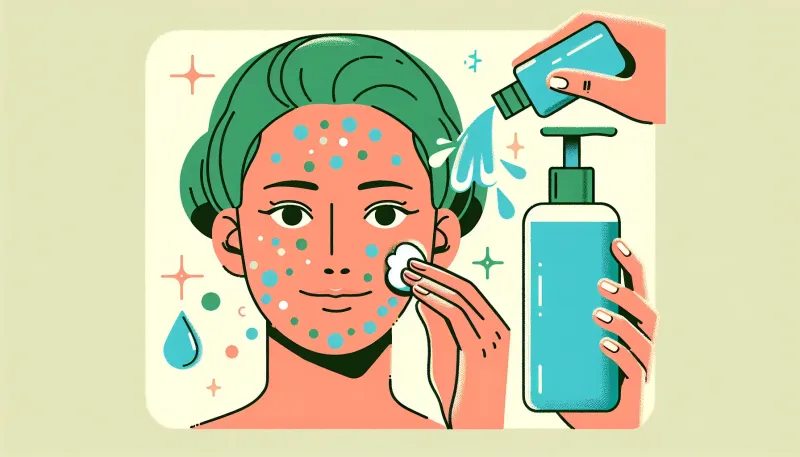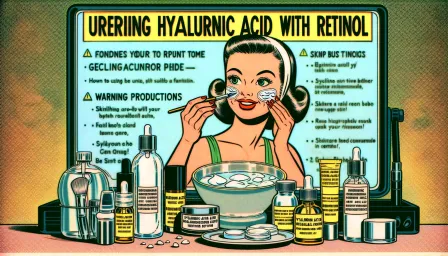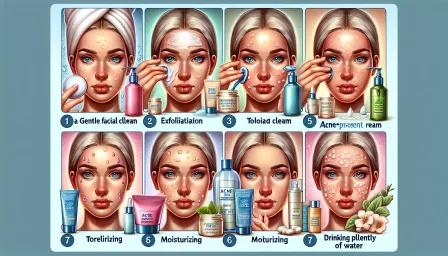The Ultimate Skin Care Routine for IUD Acne: Clear Up Your Skin

Discover the ultimate skin care routine for IUD acne. Get clear, healthy skin with expert-recommended tips and products.
Many individuals who opt for intrauterine devices (IUDs) as a form of birth control find themselves facing an unexpected challenge: acne breakouts. Hormonal fluctuations are a well-known side effect of certain types of IUDs, and they can lead to skin issues, including acne. If you're struggling with IUD-related acne, this comprehensive guide will help you develop an effective skin care routine to achieve clear and healthy skin.
Understanding IUD Acne: Causes and Contributors
To tackle acne effectively, it's crucial to understand its root causes. Here’s how IUDs can trigger acne breakouts:
Hormonal Changes
Certain IUDs, especially hormonal ones like those containing levonorgestrel, can cause hormonal imbalances that lead to increased sebum production. This excess oil can clog pores and contribute to acne formation.
Increased Skin Sensitivity
Hormonal IUDs can also make your skin more sensitive, making it more prone to irritation and inflammation, both of which are key factors in the development of acne.
Building the Ideal Skin Care Routine for IUD Acne
Creating a targeted skin care routine can mitigate the effects of IUD-related acne. Follow these expert-recommended steps:
1. Gentle Cleansing
Choose a gentle, non-comedogenic cleanser to wash your face twice daily. Look for products with soothing ingredients like aloe vera and chamomile to avoid further irritation. Avoid harsh scrubs and cleansing tools that can exacerbate inflammation.
2. Exfoliation
Exfoliate 2-3 times a week to remove dead skin cells and prevent clogged pores. Opt for chemical exfoliants containing alpha-hydroxy acids (AHAs) or beta-hydroxy acids (BHAs) over physical scrubs, which can be too abrasive.
3. Toning
Use a gentle toner to balance your skin's pH and remove residual impurities. Ingredients like witch hazel and rose water are excellent for calming the skin without causing dryness.
4. Targeted Treatments
Incorporate acne treatments with active ingredients like benzoyl peroxide, salicylic acid, or niacinamide. These can help to unclog pores, reduce inflammation, and prevent acne formation. Spot treatments can be particularly effective for managing breakouts.
5. Moisturizing
Hydration is crucial, even for acne-prone skin. Choose a lightweight, non-comedogenic moisturizer to keep your skin hydrated without clogging pores. Ingredients like hyaluronic acid and glycerin are excellent for maintaining moisture balance.
6. Sun Protection
Sun exposure can worsen acne and lead to post-inflammatory hyperpigmentation. Use a broad-spectrum sunscreen with SPF 30 or higher every day, even on cloudy days. Physical sunscreens (containing zinc oxide or titanium dioxide) are less likely to irritate sensitive skin.
Lifestyle Adjustments to Support Clear Skin
In addition to a targeted skin care routine, making certain lifestyle changes can further support your goal of achieving clear skin:
Healthy Diet
A balanced diet rich in fruits, vegetables, and lean proteins can promote healthy skin. Avoid high-glycemic-index foods and dairy products, as they can potentially exacerbate acne.
Hydration
Drink plenty of water to help flush out toxins and keep your skin hydrated from within. Aim for at least 8 glasses of water a day.
Stress Management
Stress can negatively impact your skin's health. Incorporate stress-reducing activities into your daily routine, such as yoga, meditation, or even simple deep-breathing exercises.
Adequate Sleep
Ensure you get enough rest each night to support your skin's natural repair processes. Aim for 7-9 hours of quality sleep.
Conclusion: Your Path to Clearer Skin
Managing IUD acne requires a proactive approach that combines a thoughtful skin care routine with healthy lifestyle choices. By understanding the causes and implementing the strategies outlined in this guide, you can effectively minimize breakouts and maintain clear, radiant skin. Be patient and consistent, as achieving noticeable improvements can take time. Consult with a dermatologist for personalized advice and recommendations, especially if over-the-counter treatments aren't yielding the desired results.



























